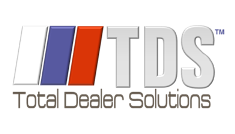Parts that are 12 months and older are obsolete.
- Parts that have not sold for 6 months have a 65% chance of not selling again
- Parts that have not sold for 7-9 months have a 75% chance of never selling
- Parts that do not sell for 9-12 months have an 85% chance of never selling
Obsolescence exists in every dealership. The most successful (profitable) manage obsolescence on a daily basis.
Why does parts inventory obsolescence occur?
Obsolescence occurs for a number of reasons. The main ones are model changes, part number supersessions, special order parts not returned, over ordering, mistaken ordering, incorrect diagnosis, ordering parts without testing them first.
How do I manage parts inventory obsolescence?
The key to managing obsolescence is good, consistent inventory management, using all the various factory allowances fully,
determining the level of obsolescence, and producing a written plan with specific actions, targets and timing, to deal with it.
How do I know if I have a parts inventory obsolescence problem?
- If you have more than 10% of your total parts inventory obsolete, you have a problem!
- Parts ordered via the factory stock order system return upwards of 30% profit, plus return allowances, advertising allowances and other specials which can amount to a further 15%
- Emergency purchases produce between 1/4 and 1/3 of the profit of stock orders and they do not earn any allowances
- Emergency purchases should not be higher than 15% of total purchases. If they are then inventory management needs review
- Non-stocking parts should never be available off the shelf
- The cost of holding obsolete parts is roughly 25-30% of the parts value for the first year
- In general, after a part has been in stock for 8 months without selling, it has added about 25% to its cost and has a 1 in 7 chance of ever selling.
How do I reduce parts inventory obsolescence?
-
Produce a written plan with the following elements:
- An aging analysis of your stock parts-both factory and non-factory
- An aging analysis of special orders (or non-stocking parts).
- A monthly statement of the return reserve allowance earned-both factory and non-factory
- A valuation and list of non-returnable parts
- A regular review of other allowances earned on parts purchases.
- A list of parts brokers/other dealerships that purchase obsolete inventory
- An analysis of frozen parts capital. Parts no-sale 6 months for stocking parts and 1 month for non-stocking parts (both factory and non- factory
-
Schedule a parts inventory with Total Dealer Solutions.
- We provide:
- An unbiased point-of-view on the level of obsolescence and frozen capital
- A parts inventory value which is fully reconciled with your General Ledger
- A knowledgeable second opinion on the operations of the parts department
- We provide:
-
Invest in software to help you manage your parts inventory
-
- Automatically reconcile your parts inventory to your GL daily to reduce variance to zero.
- Sell obsolete inventory dealer to dealer and reduce frozen capital
-
